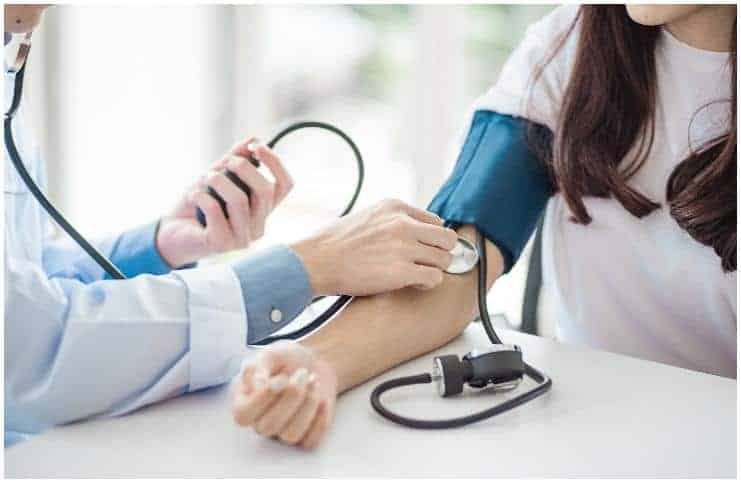Atorvastatin vs Simvastatin – Uses, Side Effects, Differences:
Atorvastatin
It belongs to a group of drugs known as HMG-CoA reductase inhibitors (statins). It is marketed under the brand name Lipitor and is produced by Pfizer.
From 1996 to 2012, it became the world’s best-selling drug, with more than US$125 billion in sales.
This statin helps to increase high-density lipoprotein (good cholesterol), which is linked with protection against atherosclerosis (also known as hardening of the arteries).
It also reduces the amount of cholesterol made by the human body. It works by blocking the action of an enzyme that is necessary to produce cholesterol. When this enzyme is blocked, less cholesterol is produced, and the amount of LDL and total cholesterol in the blood decreases.
This is very useful since excessive total and LDL cholesterol in the arteries may block blood flow to the brain, heart, and other parts of the body, leading to stroke (also known as a cerebrovascular accident) and heart attack.
Uses
It is typically used to treat high LDL and total cholesterol, and to lower the risk of heart attack, stroke, or other cardiovascular problems in individuals with coronary heart disease, type 2 diabetes mellitus, or other risk factors.
Dosage
For adults, the usual recommended dose is 10 mg or 20 mg per day. The maximum recommended dose is 80 mg taken once a day.
For children (10 to 17 years of age), the usual recommended dose is 10 mg once per day. Your healthcare professional may increase this dose; however, it should not be more than 20 mg a day.
Take statin at around the same time every day. Also, this medication may be used as part of combination therapy, meaning that you may need to take it with other drugs.
Side Effects And Precautions Of Lipitor
Common side effects may include:
- joint pain;
- muscle pain;
- upset stomach;
- diarrhea.
Rare side effects may include:
- yellowing of the skin or eyes (jaundice);
- muscle breakdown (rhabdomyolysis);
- fast heartbeat;
- memory problems;
- fever;
- confusion;
- weakness;
- dark urine;
- itching;
- muscle cramps;
- a cough;
- skin rash;
- problems swallowing;
- increased thirst;
- dizziness;
- loss of appetite;
- hives;
- drowsiness;
- wheezing;
- unusual tiredness;
- tightness in the chest;
- swelling around the eyes, face, lips, or tongue.
Do not take this medicine if you:
- have had any abnormal blood tests for liver function;
- take heart medication;
- take birth control pills;
- are hypersensitive to any similar drugs used to lower blood lipids;
- take antifungal medicine;
- take antibiotics;
- take other cholesterol-lowering medication;
- are pregnant or trying to become pregnant;
- are breastfeeding a baby;
- take medicines to treat HIV or AIDS.
Lipitor And Alcohol
Drinking alcoholic beverages while taking Lipitor considerably raises your risk of liver disease.
Other Types of Statins Available
There are a few other types of statins available, including:
- fluvastatin (Lescol);
- rosuvastatin (Crestor);
- pravastatin (Pravachol);
- pitavastatin (Livalo);
- lovastatin (Altoprev).
Simvastatin
Simvastatin (brand name – Zocor) is part of a group of drugs called HMG CoA reductase inhibitors. It works by blocking the enzyme which creates cholesterol.
This, over time, will lead to a reduction in the total amount of cholesterol available in the bloodstream.
Uses
It is typically used along with a low-fat diet to help lower LDL and total cholesterol levels and raise HDL cholesterol.
Moreover, it is prescribed to lower the risk of heart attack, stroke, and other cardiovascular conditions.
Dosage
For adults, the usual recommended dose is 10 to 20 mg once per day in the evening. For high-risk sufferers, the dose may be increased to 40 mg a day.
This medication is used for adults and children over 10 years. It commonly takes approximately 15 to 30 days to have a notable effect on the cholesterol level.
Side Effects And Precautions Of Zocor
Common side effects may include:
- vomiting;
- headaches;
- muscle pain;
- nausea;
- abnormal liver tests;
- diarrhea;
- hypersensitivity reactions;
- abdominal pain.
Rare side effects may include:
- burning during urination;
- unexplained muscle pain;
- weight gain;
- weakness;
- memory problems;
- confusion;
- unusual tiredness;
- drowsiness;
- dark-colored urine;
- dry skin;
- swelling of the mouth and lips;
- dry mouth;
- increased thirst.
Before taking this medicine, tell your healthcare professional if you:
- are breastfeeding a baby;
- are pregnant or plan to become pregnant (it could harm an unborn baby);
- are allergic to any other medicine;
- will be undergoing surgery;
- drink large amounts of alcoholic beverages (alcohol could cause unwanted effects on the liver);
- have an underactive thyroid gland;
- have liver disease;
- have type 2 diabetes mellitus;
- have seizures;
- have severe kidney disease.
Don’t drink grapefruit juice or eat grapefruits while you are using this medication because it will increase the risk of side effects.
Atorvastatin vs Simvastatin – Which Is Better?
Atorvastatin belongs to a group of drugs called HMG CoA reductase inhibitors. It reduces LDL and total cholesterol levels while increasing levels of HDL cholesterol.
Simvastatin is part of a group of drugs known as statins that reduce levels of LDL cholesterol in the blood while increasing levels of HDL cholesterol.
In conclusion, both these drugs are part of the same family of drugs called statins. According to studies, these drugs have similar effects.
The real problem is that these statins have plenty of side effects and don’t treat the real cause of high LDL cholesterol – an unhealthy lifestyle.
5 Ways To Reduce Your LDL Cholesterol Levels Without The Side Effects Of Statins:
#1 Avoid Trans Fats
If you see hydrogenated fat or partially hydrogenated fat in the ingredient list of any food that you want to buy, that food has trans fats, that lower HDL cholesterol (good) and raise LDL cholesterol (bad).
Foods containing trans-fats include
- french fries;
- potato chips;
- onion rings;
- cheeseburgers;
- hamburgers;
- hotdogs;
- pancakes;
- fried chicken;
- ice cream;
- cakes;
- cookies;
- doughnuts;
- crackers;
- sausages;
- cheese;
- mill.
#2 Stop Smoking
More than 1/3 of all deaths from cardiovascular disease are caused by smoking and second-hand smoking, according to the CDC (Centers for Disease Control and Prevention).
This happens because smoking causes inflammation that can contribute to atherosclerosis (hardening of the arteries) and blood clots.
#3 Physical Exercise
Any exercise activity is good for the cardiovascular system because it has the double benefit of increasing HDL and lowering LDL cholesterol levels.
Aim for 90 minutes of moderate aerobic exercise (like – brisk walking) daily or 60 minutes of vigorous aerobic activity (like – running, jogging, or step and spin classes) every second day.
#4 Lose Weight
Being overweight or obese increases your risk of having high LDL and total cholesterol levels.
#5 Eat More Foods High In Fiber
Eat more vegetables, fruits, legumes, seeds, whole grains, and spices.
These foods have a lot of dietary fiber that can bind cholesterol and prevent its absorption into the bloodstream.
For instance, people who increase their daily fiber intake with just 5 grams of fiber over a 26-week period lowered their LDL cholesterol by 6.7% and their total cholesterol levels by 4.7%, according to a study done at the University of Kentucky.
Foods high in fiber include:
- peas;
- black beans;
- pinto beans;
- lentils;
- red kidney beans;
- lima beans;
- chickpeas;
- sweet potatoes;
- potatoes;
- oats;
- oat bran;
- amaranth;
- barley;
- blueberries;
- blackberries;
- cranberries;
- strawberries;
- Brussels sprouts;
- broccoli;
- cauliflower;
- carrots;
- walnuts;
- almonds;
- hazelnuts;
- apples;
- pineapples;
- papayas;
- mangoes;
- garlic;
- onions;
- cabbage;
- zucchini;
- radishes;
- turnips;
- kale;
- spinach;
- tomatoes.
READ THIS NEXT:
Mineralocorticoids vs Glucocorticoids
Caffeine Anhydrous vs Caffeine
References https://www.ncbi.nlm.nih.gov/pubmed/7968073 https://www.sciencedirect.com/topics/neuroscience/scandinavian

